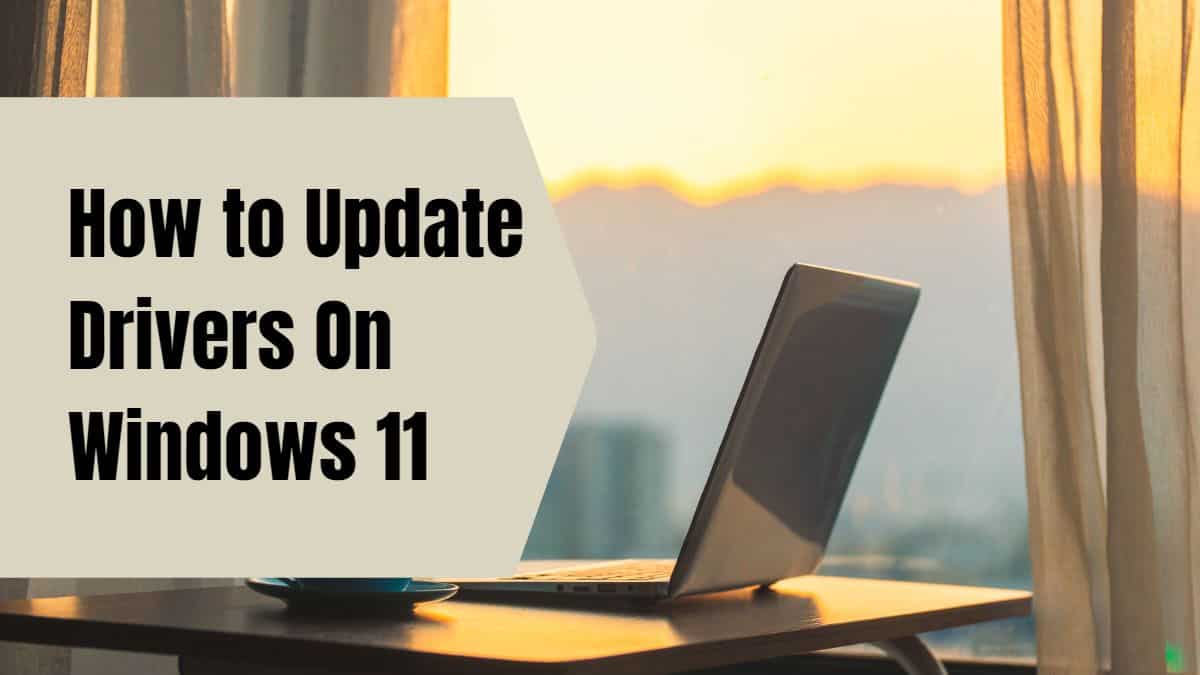How to Update Drivers On Windows 11

Table of Contents
Fired up Windows 11 and need to update a specific piece of hardware or peripheral with the latest driver, but don’t know where to start? Fret not, as Windows 11 is designed to do most, if not all, the heavy lifting for you, and for the times when a manual installation is required, we’ve got you covered.
In this guide, we’ll walk you through all the steps required to spruce up your Windows 11 experience with the most up-to-date drivers out there. Read on to find how to update drivers in Windows 11 both automatically and manually, as well as how to update those all-important GPU drivers. Let’s dive in.
How to Update Drivers On Windows 11 With Windows Update
The easiest way to have the most recent and stable drivers is to delegate the task to Windows Update. Microsoft does a stellar job of vetting the best drivers for your PC’s hardware and peripherals, then pushing them out via Windows Update as optional updates to download and install.
Step
Open the windows task bar
Click on the Search icon (large magnifying glass) on the Windows 11 taskbar.
Step
Search for Windows update
Type Windows Update into the search field and click on the ‘Best Match’ bearing the same name.
Step
Check for updates
In the Windows Update window, click on Check for updates, then let it ping Microsoft’s servers for the latest available. Important driver updates trigger automatically from here.
Step
View optional updates
Click to View optional updates just below.
Step
Select the Driver Updates tab
Click on the Driver Updates tab to expand the field and see a list of all the available driver updates for your hardware and peripherals.
Step
Download and install
Tick the options you want to download and install. Windows 11 will do the rest.
How to Update Drivers On Windows 11 With Device Manager
While Window 11 keeps everything running smoothly in most scenarios, there are times when a manual driver update is desired or even required. Windows 11’s Device Manager allows you to do just that reasonably easily.
Step
Click on the Search icon (large magnifying glass icon) in the Windows 11 taskbar.
Step
Type’ Device Manager’ into the search field, then select the ‘Best Match’ result with the same name to launch Device Manager.
Step
You’ll see a list of all your PC devices (components and peripherals).
- Select the device you want to update by first clicking on the device type tab (display adapters, network adapters, audio inputs, and outputs, etc.).
- Then right-click on the specific device itself.
- Select the Update driver option from the drop-down menu that pops up.
Step
In the new window that appears, click on ‘Search automatically for drivers’, prompting Windows 11 to search for any new drivers.
Alternatively, you can click on ‘Browser my computer for drivers’ if you’ve downloaded drivers directly from a manufacturer’s website and been instructed to follow this step for installation.
Step
If a driver is found, Windows 11 will do its thing and install the necessary files.
How to Update Graphics Card Drivers On Windows 11
To update your graphics card drivers in Windows 11 to the latest and most stable versions, we highly recommend using either NVIDIA or AMD’s bespoke software.
NVIDIA GPU
Step
Visit the GeForce Experience page on the official NVIDIA website.
Step
Click on Download Now and allow the installer to download to your PC.
Step
Double-click on the GeForce Experience installer and follow the installation wizard process.
Step
Once installed, right-click on the NVIDIA Settings system tray icon in the bottom right of the Windows 11 taskbar and select NVIDIA GeForce Experience.
Step
In the GeForce Experience window, click on the Drivers tab, then select Check For Updates in the top-right.
Step
Click on the Download button to install the latest Game Ready Driver for your GPU.
Step
If GeForce Experiences shows Express Installation and Custom Installation options instead of Download, click the Express option.
Alternatively, click on Custom Installation if you are setting up a new PC. When prompted, select the devices you want to update (Graphics Driver, HD Audio Driver, USB-C Driver, etc.), then tick the ‘Perform a clean installation’ box, and click on Install.
Step
Restart when prompted to do so.
Make sure you have automatic updates turned on in the GeForce experience settings.
AMD GPU
Step
Visit the AMD Radeon Software page on the official AMD website.
Click on Download Now.
Step
Once the download is complete, fire up the installation wizard and follow the steps to install AMD Radeon Software.
Step
Once installed, right-click anywhere on the Windows 11 desktop and select AMD Radeon Software or right-click on the system tray icon to launch the application.
Step
Navigate to the Home tab along the top.
Step
Click on the Download button under Driver & Software on the right-hand side of the window (or Check for Updates if Download isn’t showing).
Step
Once the download is complete, click on Install.
Step
In the new window that pops up, configure the options/install location as desired (there’s a factory reset option that will wipe any previous versions of the drive – highly recommended for a clean install), then click on Install.
Step
Allow the installation to proceed, then click Restart.
Summary
With the steps above, you’ll be able to keep Windows 11 and your PC running in tip-top condition with the best and latest drivers out there.
If you experience any issues or any pressing questions or concerns, don’t hesitate to pop into the comments section below. Be sure to check out our growing list of Windows 11 articles covering everything from installation to updates for all your shiny, new operating system needs.
